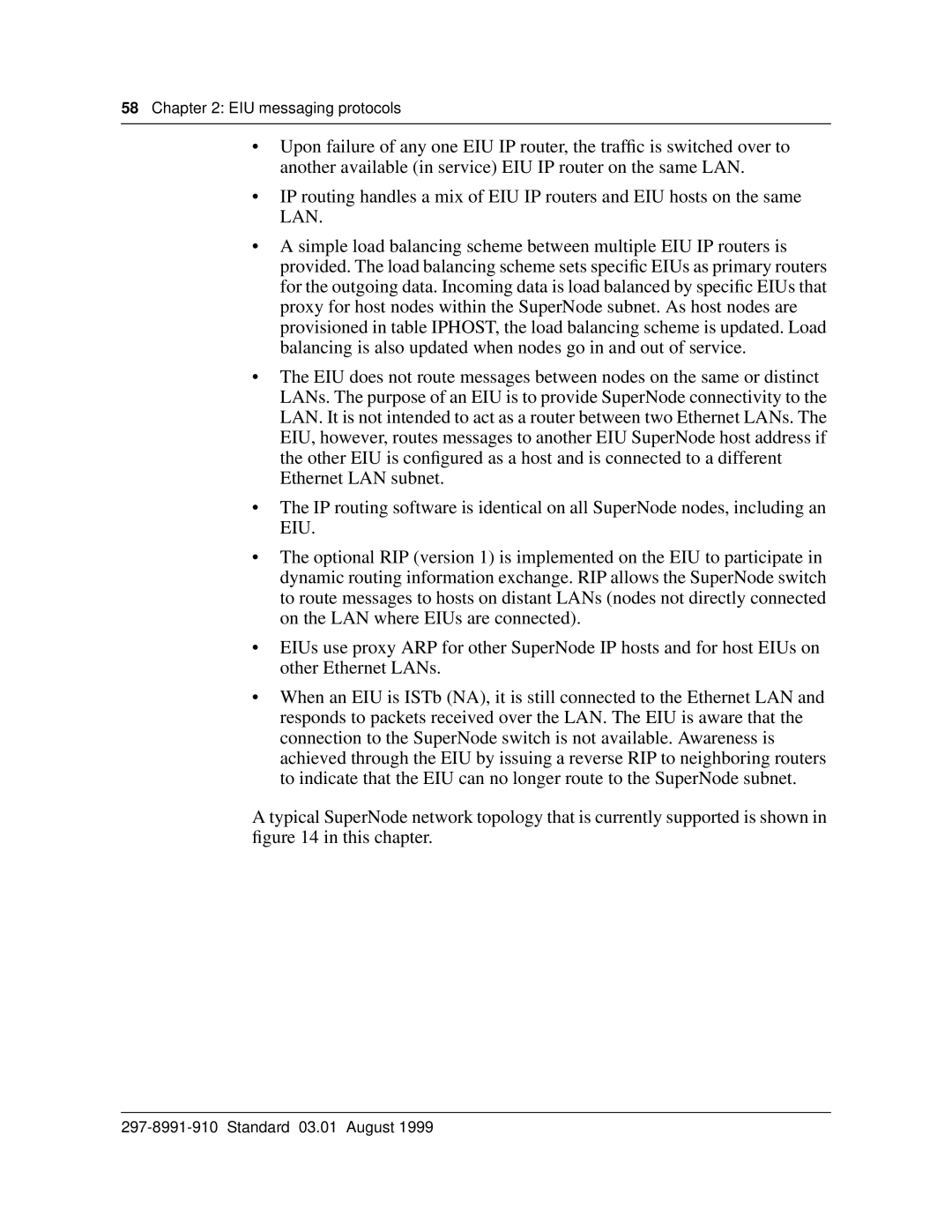
58Chapter 2: EIU messaging protocols
•Upon failure of any one EIU IP router, the traffic is switched over to another available (in service) EIU IP router on the same LAN.
•IP routing handles a mix of EIU IP routers and EIU hosts on the same LAN.
•A simple load balancing scheme between multiple EIU IP routers is provided. The load balancing scheme sets specific EIUs as primary routers for the outgoing data. Incoming data is load balanced by specific EIUs that proxy for host nodes within the SuperNode subnet. As host nodes are provisioned in table IPHOST, the load balancing scheme is updated. Load balancing is also updated when nodes go in and out of service.
•The EIU does not route messages between nodes on the same or distinct LANs. The purpose of an EIU is to provide SuperNode connectivity to the LAN. It is not intended to act as a router between two Ethernet LANs. The EIU, however, routes messages to another EIU SuperNode host address if the other EIU is configured as a host and is connected to a different Ethernet LAN subnet.
•The IP routing software is identical on all SuperNode nodes, including an EIU.
•The optional RIP (version 1) is implemented on the EIU to participate in dynamic routing information exchange. RIP allows the SuperNode switch to route messages to hosts on distant LANs (nodes not directly connected on the LAN where EIUs are connected).
•EIUs use proxy ARP for other SuperNode IP hosts and for host EIUs on other Ethernet LANs.
•When an EIU is ISTb (NA), it is still connected to the Ethernet LAN and responds to packets received over the LAN. The EIU is aware that the connection to the SuperNode switch is not available. Awareness is achieved through the EIU by issuing a reverse RIP to neighboring routers to indicate that the EIU can no longer route to the SuperNode subnet.
A typical SuperNode network topology that is currently supported is shown in figure 14 in this chapter.
